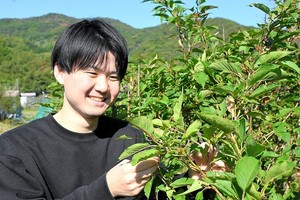THE ASAHI SHIMBUN
July 21, 2022 at 19:01 JST
 Children at a Tokyo elementary school listen to their school song on a teleconferencing system but refrain from singing during a ceremony to mark the end of the first term on July 20. (Hiroyuki Yamamoto)
Children at a Tokyo elementary school listen to their school song on a teleconferencing system but refrain from singing during a ceremony to mark the end of the first term on July 20. (Hiroyuki Yamamoto)
Facing a staggering record-high of 31,878 fresh infections, the Tokyo metropolitan government on July 21 decided to declare a “red alert” to fight the latest COVID-19 explosion.
It marks the first time the capital has logged more than 30,000 new patients in a day.
The figure was a big jump from the previous record of 21,562, set on Feb. 2.
The capital’s declining trend of COVID-19 cases that started in February bottomed out on June 13, with 960 new infection cases.
But with the rise of the BA.5 Omicron subvariant, the trend reversed and cases have rocketed upward.
The daily count exceeded 20,000 for the first time in five months on July 20.
In response, the metropolitan government’s panel that monitors the infection situation held a meeting on July 21 and decided to raise its alert level for the medical care system to “red,” the highest of its four levels, illustrating the seriousness of the pandemic’s impact on the capital’s health care services.
RECORDS SMASHED NATIONWIDE
Local governments across Japan are also bracing for the impact amid the latest surge, as many prefectures logged new records of daily cases on July 21.
Fukui Prefecture broke its own record for three consecutive days in a row.
Osaka, Fukuoka, Hyogo, Tottori, Kagawa, Oita, Nagasaki and Yamaguchi prefectures hit new records for the second straight day.
Wakayama Prefecture confirmed a record high 1,384 new cases. Underscoring the sense of alarm held by officials over the surge, Takako Nojiri, a prefectural health official, called it a “cosmic figure for Wakayama” during a news conference.
Other prefectures, such as Kyoto, Hiroshima, Tokushima, Okayama and Ishikawa also observed record-high figures.
Hokkaido was meanwhile hit with 3,965 new infections that day. Officials are concerned as the figure is rapidly approaching the record high of 4,097, set on Feb. 10.
PUSH FOR BOOSTERS RENEWED
The central government has heightened its sense of crisis, looking for ways to entice more people to get their COVID-19 boosters.
One of them is by keeping the mass-vaccination sites run by the Self-Defense Forces open longer than scheduled.
Chief Cabinet Secretary Hirokazu Matsuno announced the extension at a news conference on July 21.
The three SDF-operated sites in Tokyo and Osaka Prefecture will remain open after July 31, when they were initially scheduled to close.
Matsuno said the government is concerned about the low immunization rate of young people.
“Only about 30 to 50 percent of young people have received a booster shot,” he said.
Matsuno also doubled down on the importance for people who are 60 or older to receive the second booster shot early to prevent them from developing severe symptoms if they contract the virus.




















A peek through the music industry’s curtain at the producers who harnessed social media to help their idols go global.
A series based on diplomatic documents declassified by Japan’s Foreign Ministry
Here is a collection of first-hand accounts by “hibakusha” atomic bomb survivors.
Cooking experts, chefs and others involved in the field of food introduce their special recipes intertwined with their paths in life.
A series about Japanese-Americans and their memories of World War II